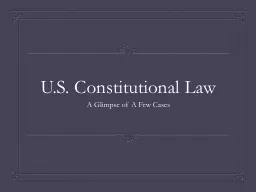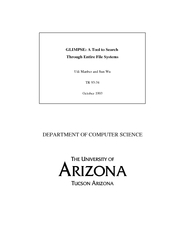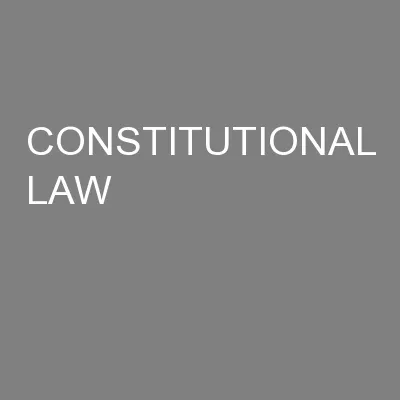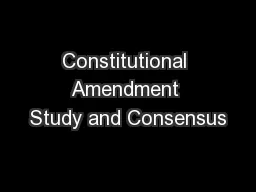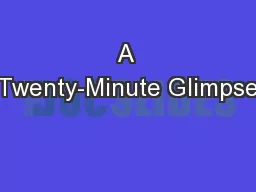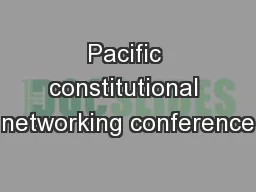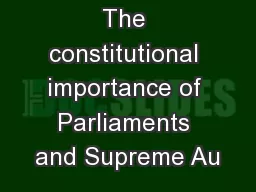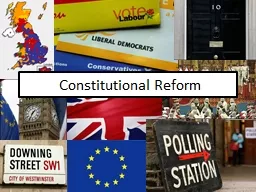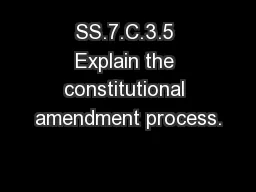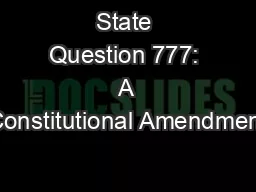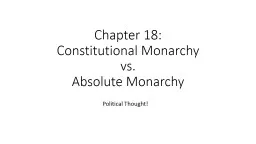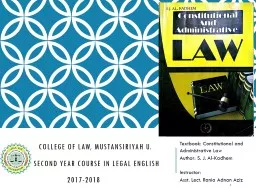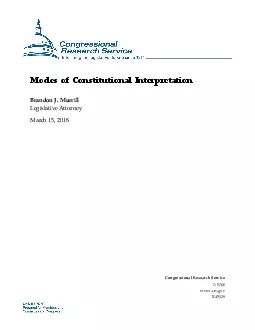PPT-U.S. Constitutional Law A Glimpse of A Few Cases
Author : lois-ondreau | Published Date : 2018-03-16
Creation of the US Constitution Continental Congress functioned as the provisional government of the United States September 5 1774 to March 1 1781 Articles
Presentation Embed Code
Download Presentation
Download Presentation The PPT/PDF document "U.S. Constitutional Law A Glimpse of A F..." is the property of its rightful owner. Permission is granted to download and print the materials on this website for personal, non-commercial use only, and to display it on your personal computer provided you do not modify the materials and that you retain all copyright notices contained in the materials. By downloading content from our website, you accept the terms of this agreement.
U.S. Constitutional Law A Glimpse of A Few Cases: Transcript
Download Rules Of Document
"U.S. Constitutional Law A Glimpse of A Few Cases"The content belongs to its owner. You may download and print it for personal use, without modification, and keep all copyright notices. By downloading, you agree to these terms.
Related Documents

